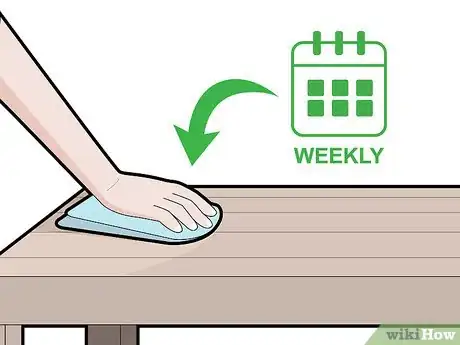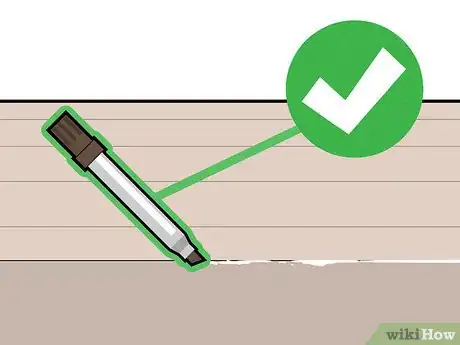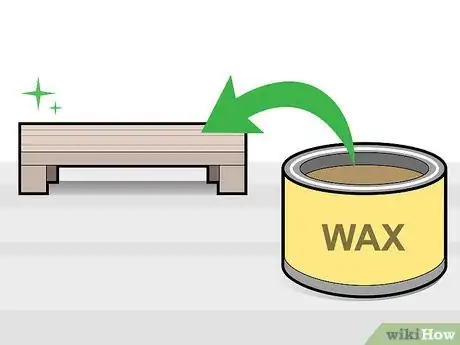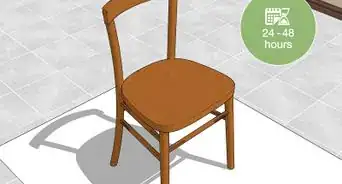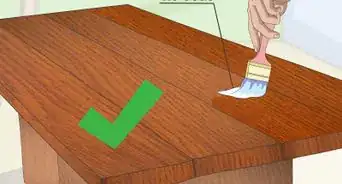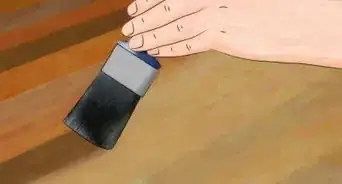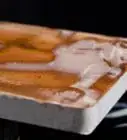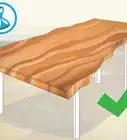This article was co-authored by wikiHow Staff. Our trained team of editors and researchers validate articles for accuracy and comprehensiveness. wikiHow's Content Management Team carefully monitors the work from our editorial staff to ensure that each article is backed by trusted research and meets our high quality standards.
There are 9 references cited in this article, which can be found at the bottom of the page.
This article has been viewed 46,290 times.
Learn more...
Wood furniture withstands the test of time and home and office trends for its style, functionality and craftsmanship. Whether you’ve just splurged on a statement wooden table for your dining room, or found the perfect wooden side or coffee table during your last antiquing trip for a bargain, proper care and protection of your wooden table is important to maintain its beauty and ensure your investment lasts for years to come.
Steps
Caring for Your Wooden Table
-
1Choose an environment that will not damage your wooden table. Where you place your wooden table in your home or office is more important than you might think and can impact its appearance and condition over time. Wood material is highly vulnerable to moisture, dryness and other extreme settings, so picking a place with a consistent temperature is best. Exposure to fluctuating temperatures can cause warping, cracking and even shrinking to your wooden table.[1]
- Places like laundry rooms and bathrooms are not ideal for your wooden table due to high levels of moisture and humidity in the air.[2] Living rooms, dining rooms, bedrooms and offices tend to have more stable temperatures with a good balance of moisture and dryness.
- Even in a room with moderate temperatures, your wooden table can still sustain damage if it’s near a radiator, heater, fireplace, or in a spot with lots of direct sunlight.[3] Examine the space thoroughly before making a final decision on placement.
-
2Dust weekly to prevent build up and scratches. It may be surprising that something as seemingly harmless as dust could damage your wooden table, but it can. When dust accumulates, it can cause small scratches to the surface of your wooden table. Dusting frequently about 1 to 2 times per week can keep dust away and keep your table in great shape.[4]
- Dusting your wooden table with cloth is better than using a feather duster. Feather dusters can sometimes spread dust even more. Instead, dust your wooden table using a cloth that is clean, soft and dry.[5] You can lightly dampen the cloth with water to help capture all of the residue, or you can purchase a microfiber or lint-free cloth for more thorough cleaning.
- Gently swipe the cloth over the wooden table using a circular motion. Avoid harsh wiping as it could cause damage to the surface or stain of the wood. Wiping in the direction of the wood grain is recommended.[6]
Advertisement -
3Clean up accidents immediately to avoid permanent damage. Accidents can and will happen. To protect your wooden table from serious damage, quickly clean up any food or drink spills. Waiting too long to clean up will allow the spill to set, which could cause more damage than the initial spill.
- Like with dusting, using a cloth that is clean, soft and dry is best to clean up an accident. Though it’s OK to use a bit of water to lightly dampen the cloth, too much water can be bad for your wooden table.[7] If a stain has set and needs a bit more power than just a damp cleaning cloth, a product that is specifically for cleaning wooden furniture may be required, like a water ring remover or mark remover. Your wooden table is special and requires special care, so avoid using an all-purpose cleaner.[8]
- Some cleaners contain chemicals that may be harmful to you. There are many non-toxic options you can make at home yourself using ingredients such as vinegar, olive oil, lime juice and turpentine.
Protecting Your Wooden Table
-
1Limit the possibility of damage with a protective layer. While we can’t always prevent accidents from happening, things like tablecloths, placemats, coasters and trivets can limit direct contact with heat, moisture and other elements.[9] We live in a day and age where we don’t have to choose between design and function. You can find protective pieces that are beautiful and match your style.
- Some protective pieces, like placemats, can be made of materials that can be harmful to your wooden table. Avoid products made of plastic or vinyl.[10]
- Decorative pieces such as vases or centerpieces can also be a threat as they could potentially scratch the surface of your wooden table. Consider placing cork or felt pads underneath those kinds of pieces to protect it.
-
2Treat minor scratches yourself to keep your wooden table looking its best. Even with proper care, normal wear and tear will happen over time. Unless its serious damage that requires an experienced professional, you can repair scratches yourself quickly and easily.[11]
- You should always avoid sliding anything across your wooden table to prevent scratches. But, if a scratch does occur, there are a variety of effective and affordable options that can help you get your wooden table looking great again. Wood touch-up markers, liquid scratch covers, or wood filler sticks are just a few examples of items available to help you fix a scratch.
-
3Apply wax to protect and restore shine. There all kinds of oils, sprays and polishes available for maintaining your wooden table. While many of these products can be helpful, wax can be particularly useful for various reasons. If applied properly and regularly, wax can serve a dual purpose by enhancing the beauty of your wooden table and protecting it from damage.
- Polish and oils offer a more cosmetic solution that can help bring back shine to your wooden table. Typically, they do not provide additional protection for it.
- A “finish” is applied to wood furniture to enhance the beauty of the piece and to seal the wood to protect it. Using wax can protect that finish by adding an additional protective barrier. Many waxes also help restore a glossy look, which can keep your wooden table looking shiny and new year after year.
References
- ↑ http://www.rusticelementsfurniture.com/blog/humidity-and-wood-furniture/
- ↑ https://www.furnituremedic.com/furniture-care-tips
- ↑ http://www.rusticelementsfurniture.com/blog/humidity-and-wood-furniture/
- ↑ https://www.thekitchn.com/how-to-maintain-a-wooden-dining-table-165534
- ↑ https://www.thekitchn.com/how-to-maintain-a-wooden-dining-table-165534
- ↑ https://www.bobvila.com/articles/how-to-clean-wood-furniture/#.WmVXX6inHIU
- ↑ https://www.bhg.com/decorating/lessons/furniture-guide/wood-furnishings-care/
- ↑ https://www.bhg.com/decorating/lessons/furniture-guide/wood-furnishings-care/
- ↑ https://www.washingtonpost.com/lifestyle/home/six-ways-you-are-ruining-your-wood-tables/2017/04/18/617a4290-1963-11e7-855e-4824bbb5d748_story.html?utm_term=.753cca44afbf

